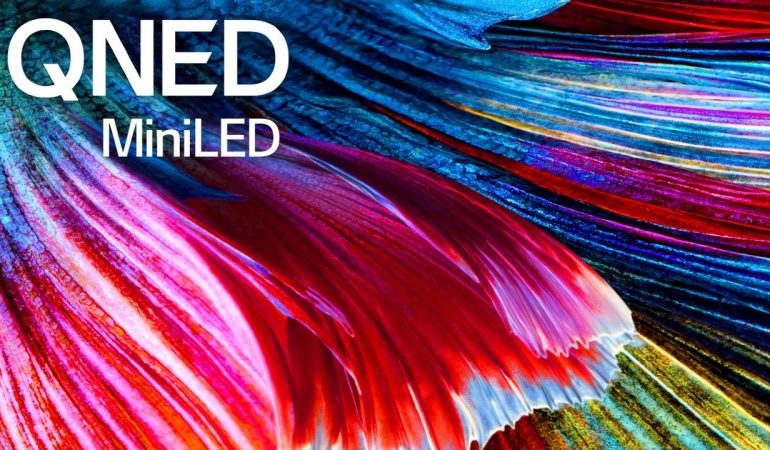What is a QNED TV?
You’ve heard of LCD TVs. You have probably heard of OLED TVs. But there are a few out there that people don’t really know what they are. LED? QLED? QNED? What’s going on here?
LCD vs OLED
At the foundation, there are currently two different TV technologies on the market – OLED and LCD. OLED stands for Organic Light-Emitting Diodes and LCD is Liquid Crystal Display. What is the difference?
At the heart of it is backlighting. LCD screens contain two parts, an LCD panel and a backlight. Think of the LCD panel as tiny windows with colored glass. They cannot create light on their own, so they need a light behind them to shine through. The TV creates the picture by opening and closing these windows to varying degrees to create the pixels of the correct colors. The light that is used behind the window is an LED light. Sometimes many LED lights. The quality and the number of lights can play a big difference in the quality of the picture. Today, many people are calling LCD displays with LED backlights, LED displays. Confusing? Yes. But just remember that they are all just LCD displays with LED backlighting.
OLED TVs are a self-emissive technology. The pixels in the OLED panel both create the light AND the color without needing a window or a backlight. This means that every diode in the panel can be turned completely off when needed. This is why OLED TVs have such a great reputation for black levels and contrast.
So, What’s the Deal with QNED TVs?
We’re getting to that. The innovations that are currently happening in LCD displays is improving the backlight source. At first, we used fluorescent backlights, the newer LED LCDs use LED backlights. If you can make the backlight smaller, you can turn off more areas of the picture (called “zones”) to get better black levels. More zones mean better black levels.
You may have heard of QLED. This is a Samsung brand that uses Quantum Dots as backlights (hence the “Q” in QLED). These small lights increase the number of dimmable zones increasing black levels and contrast. If you are wondering why other manufacturers also make QLED displays, it is because Samsung signed licensing deals with these brands so that they can also use the QLED nomenclature.
So, what is a QNED TV? LG has announced their new QNED displays will use Quantum Nanocell miniLEDs as their backlights. This will allow QNED displays to have up to 2,500 local dimming zones. This much smaller lighting solution is a vast improvement over other LED solutions, but it doesn’t hold a candle to the OLEDs ability to dim every pixel of the display. It is better than other LED backlit displays, but still not as good as OLEDs.
Wait…How does “Quantum Nanocell miniLEDs” become QNED?
Yeah, that’s the thing. It doesn’t. QNED is a real technology. It stands for “Quantum Nanorod Emitting Diode.” It’s a self-emissive display technology, in which nanorods made of Gallium Nitride emit pure blue light, and then red and green quantum dots are used to create RGB sub-pixels.
But LG is stealing the QNED name, and saying it stands for “Quantum NanoCell miniLED Display.” We’re not sure where the “E” comes from and we don’t think it matters. At the end of the day, it’s still just an LCD TV! It’s a better backlight, with as many as 2,500 zones of local-dimming in the 86-inch 8K model. But it’s still an LCD TV, that even LG fully admits still won’t look as good as an OLED.
So…Why? Why Call Them QNED TVs?
This one is easier to answer. Samsung marketed QLED as a direct competitor to OLED (the names even look the same). LG didn’t like that one bit and even complained to the South Korean FTC about their marketing (link). The FTC sided with Samsung. Now LG has come out with a type of display whose name looks a lot of QLED? The closeness of the acronyms can’t be a coincidence. It’s a clear move to dilute the QLED message with one that says that LG’s version of a quantum solution is not only better, but it is also made by the same people that make the BEST displays, the OLEDs. The shoehorning of the acronym might be a stretch, but the intent is clear: We can mess with your acronym too!
Special thanks to Rob of the AV Rant Podcast for his help with this article.


